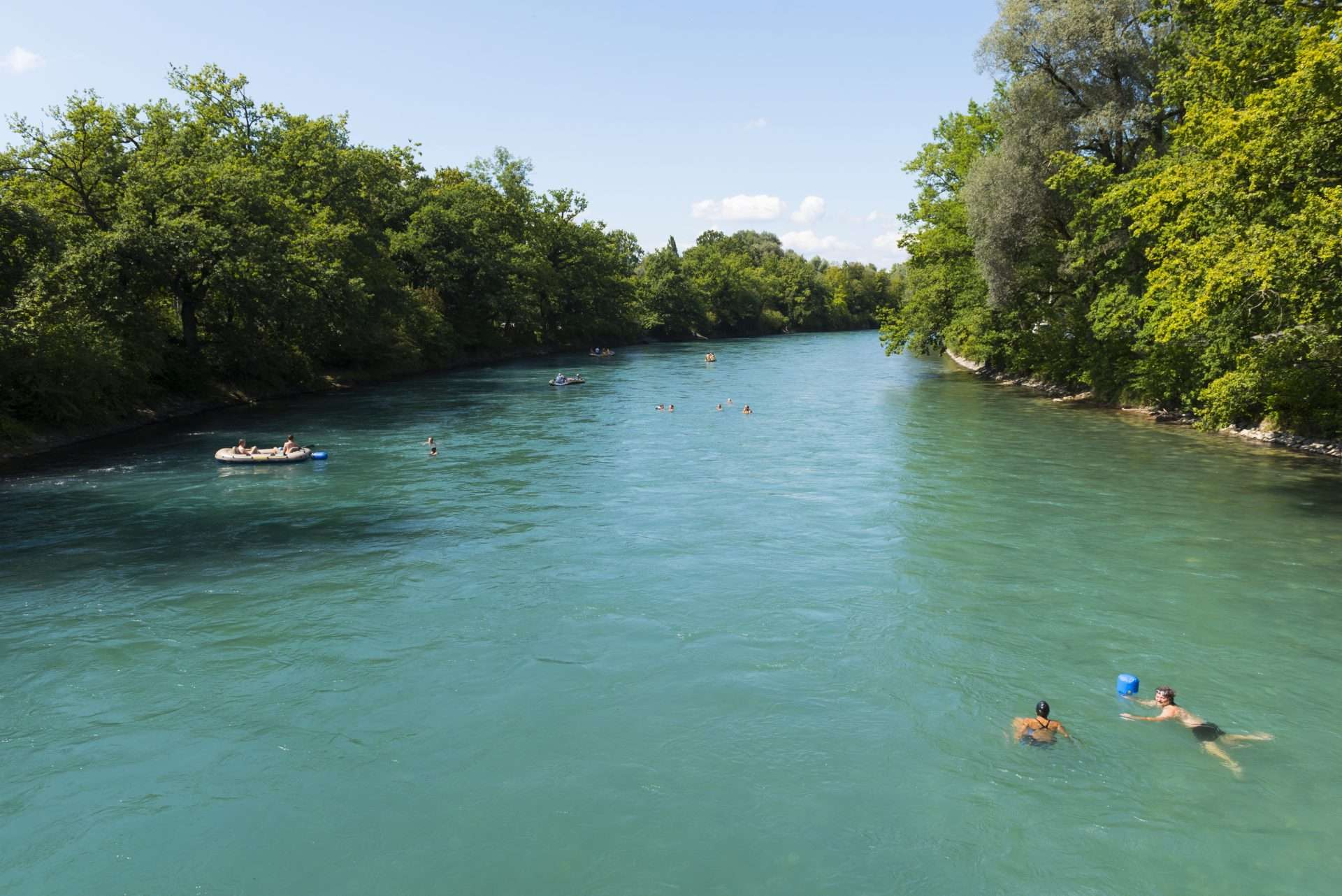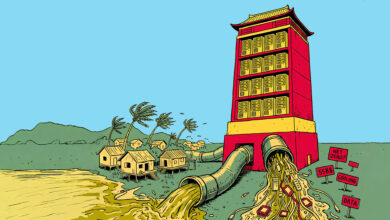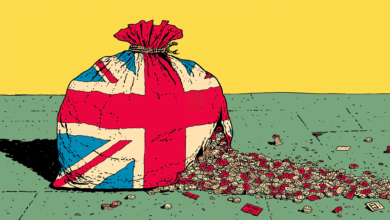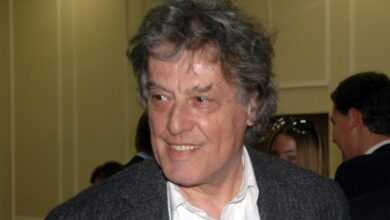Flowing Downstream

When I travel to a new city, I make sure to try out its public transit system, especially the metro. Out of the ones I’ve experienced, the DC metro is my favorite: straightforward, clean, and aesthetically minimalist. It offers a sense of order that can be elusive for the average commuter.
Anyone who has been on a subway during rush hour knows the challenges that it can bring. In spite of that, I have always viewed it as the best way for commuters in major cities. Although not all cities have the qualities that make DC’s so great, subways are generally cheap, fast, and relatively efficient.
But when I was in Bern, Switzerland’s capital, I witnessed a commute unlike any I had seen before. Next to the Parliament Building, I came to a set of stairs that led down to the Aare River. There, I saw commuters floating downstream in their swimsuits, carrying waterproof bags that held their work clothes. They let the current carry them to their destinations.
In Bern, the water is clear and the current swift. Swimming in the Aare is a safe and free option to get to work. In the summer heat, this is also a refreshing option. Cooling in the Aare has always been a summertime activity for locals, but using it to commute is a newer practice. Anna Baehni, who lives in Bern’s Old Town, said that the Aare is also a place of social gathering. While swimming, people greet both friends and strangers.
French economist Alexis Sémanne, in her article Spontaneous Order vs. Centralized Planning: Hayek’s Critique of the French Pandemic, uses Hayek to critique France’s COVID-19 response. She frames it as an example of excessive central planning rooted in a tradition of rationalism. Hayek criticized the dominance of prestigious institutions like the École Polytechnique and the École des Mines, which trained engineers to employ a “mathematical, deterministic approach to governance.”
Hayek’s key insight about spontaneous order is that when customs emerge from individual interactions over time, we end up with more human-centered systems. When a central authority attempts to gather dispersed knowledge, the result tends to be a rigid system. In Law, Legislation, and Liberty, Hayek distinguished between nomos (customary law, what we call “bottom-up”) and thesis (imposed law, what we call “top-down”). His main point is that systems work best if they emerge from shared practices through a “bottom-up” process.
Where France’s pandemic response exemplifies the rigidity of thesis, Bern offers a living example of nomos. The Aare River commute is a system that emerged organically, shaped by tradition, local knowledge, and individual choice. No bureaucrat planned this commuting method, and it works. Humans have the ability to create solutions more beautiful than any technocrat could imagine.
This custom came about without any central coordination. The river is open and accessible. Although I personally enjoy taking the subway, for those who hate crowds, no matter how well it’s planned, the metro will always be at least a little bit miserable. Bern’s river commute proves that getting to work doesn’t have to be so bad.
As someone who appreciates the subway and a clear metro map, I’m not suggesting every city send office workers swimming through rivers. In places like New York or Paris or London, where the main rivers are very much contaminated (or full of boat traffic), this would be frankly impossible. What makes the Aare experience so special is its unscalability. The conditions that make it possible—clean water and high social trust—cannot be magically replicated elsewhere. The transferability of an innovation is dependent on the intertwining of sociocultural, institutional, technological, environmental, and economic factors. None of these can be mass-produced.
So the question is not “How do we copy this?” but instead “What might be around us that we’ve overlooked?” Bern shows us that when people are free to experiment with their environment, the result can be seriously brilliant. In a society rushing after grand planning schemes, the Aare River commute reminds us that some solutions are just waiting to be noticed.
The post Flowing Downstream was first published by the Foundation for Economic Education, and is republished here with permission. Please support their efforts.



